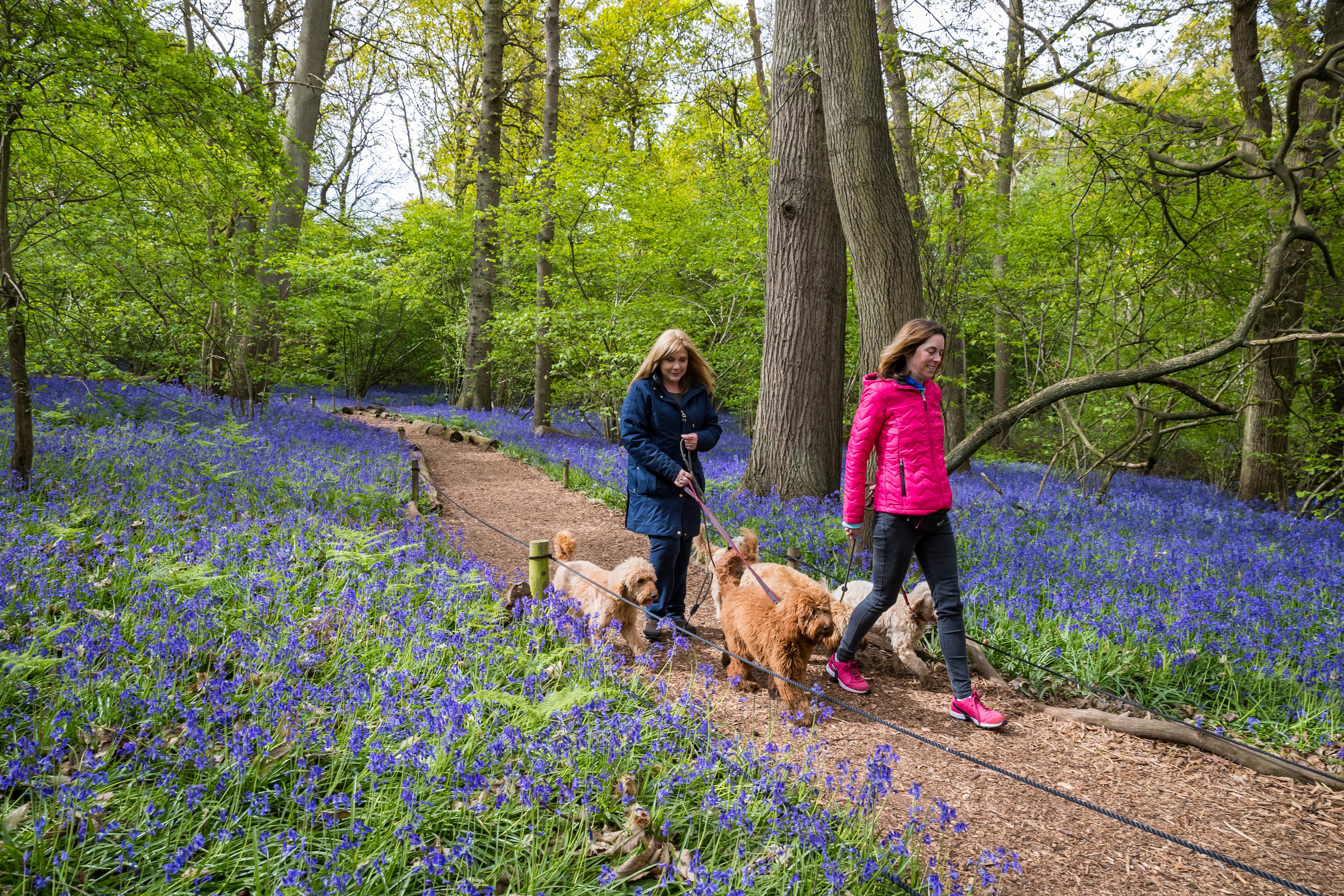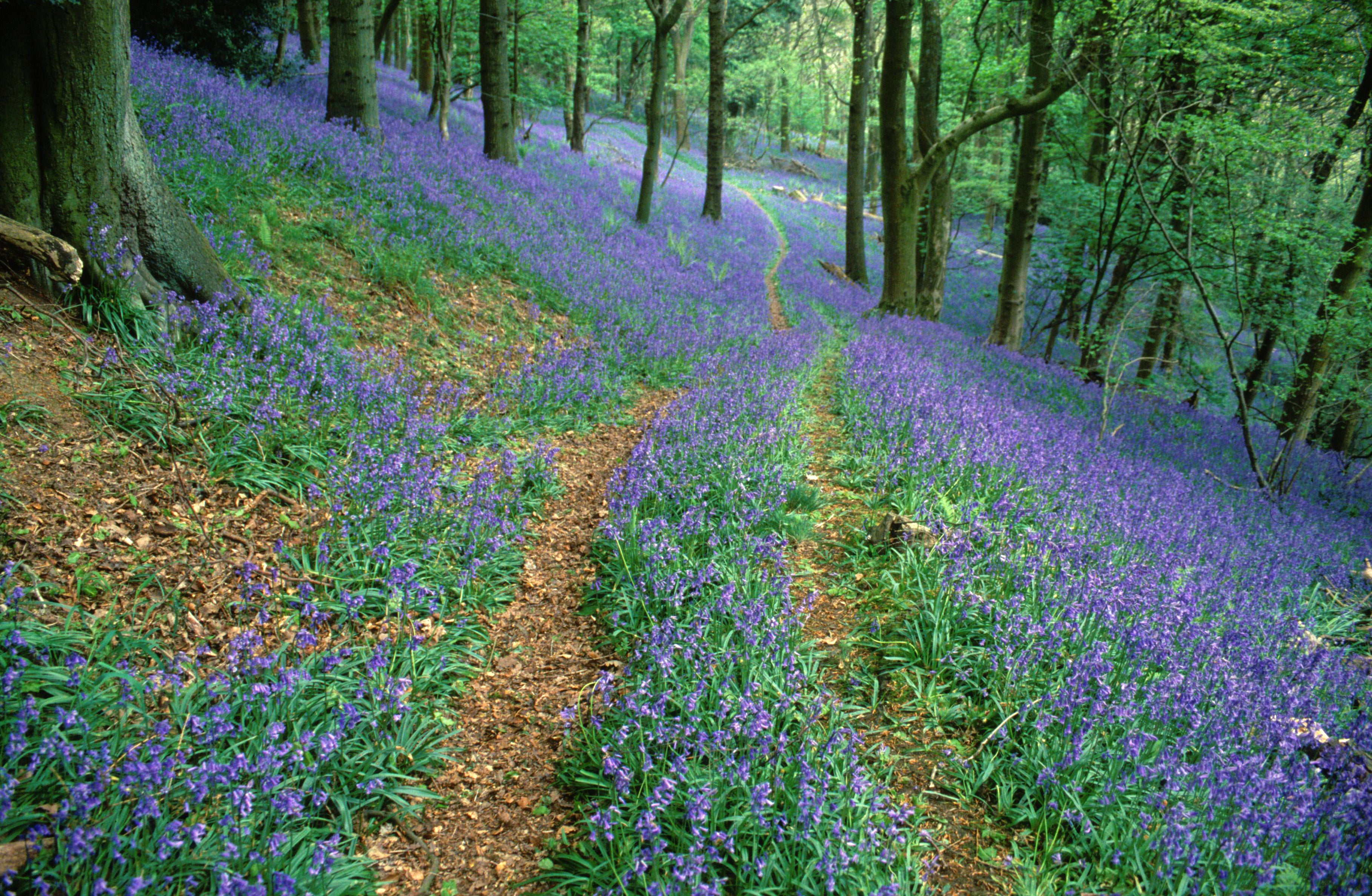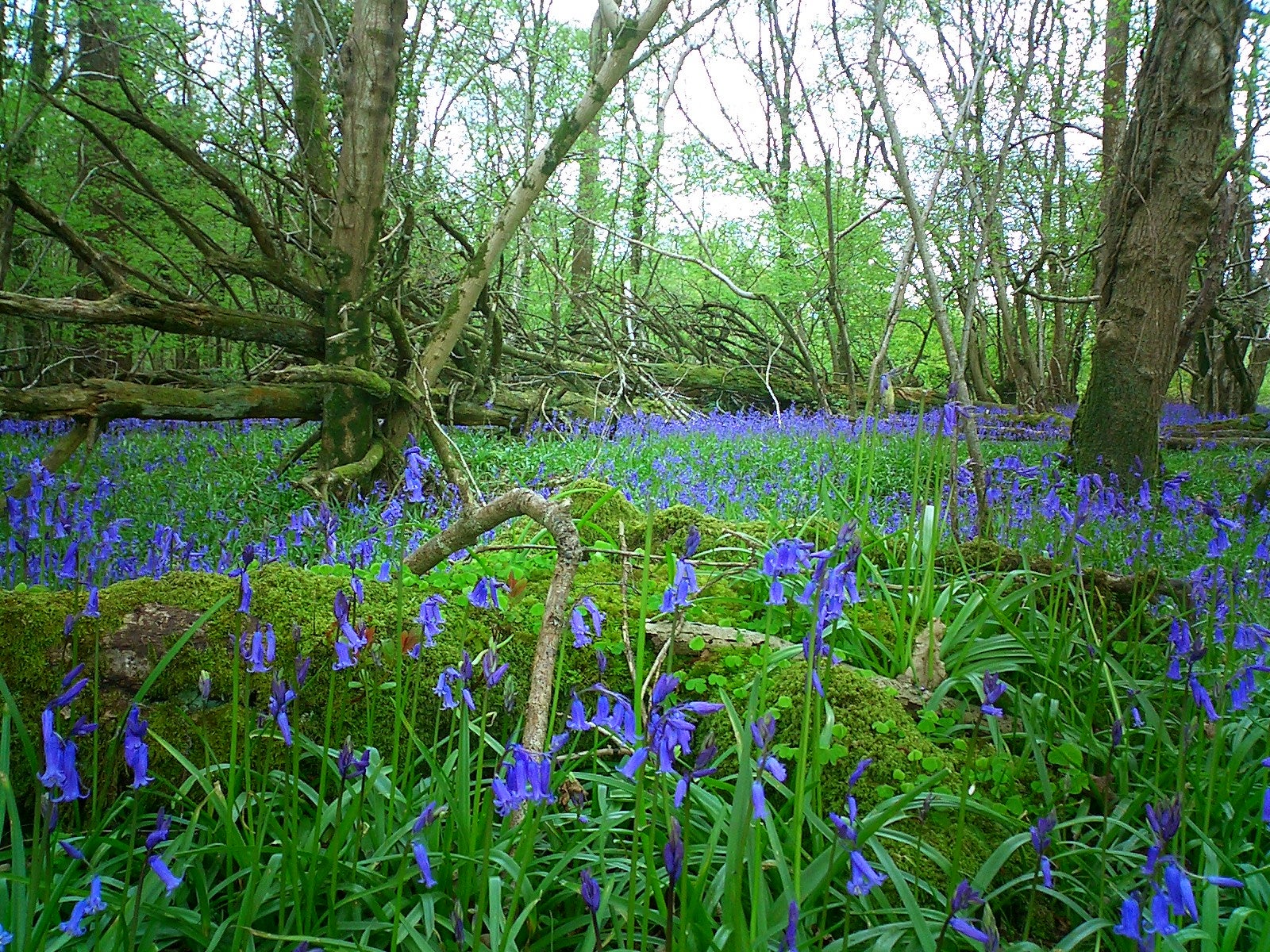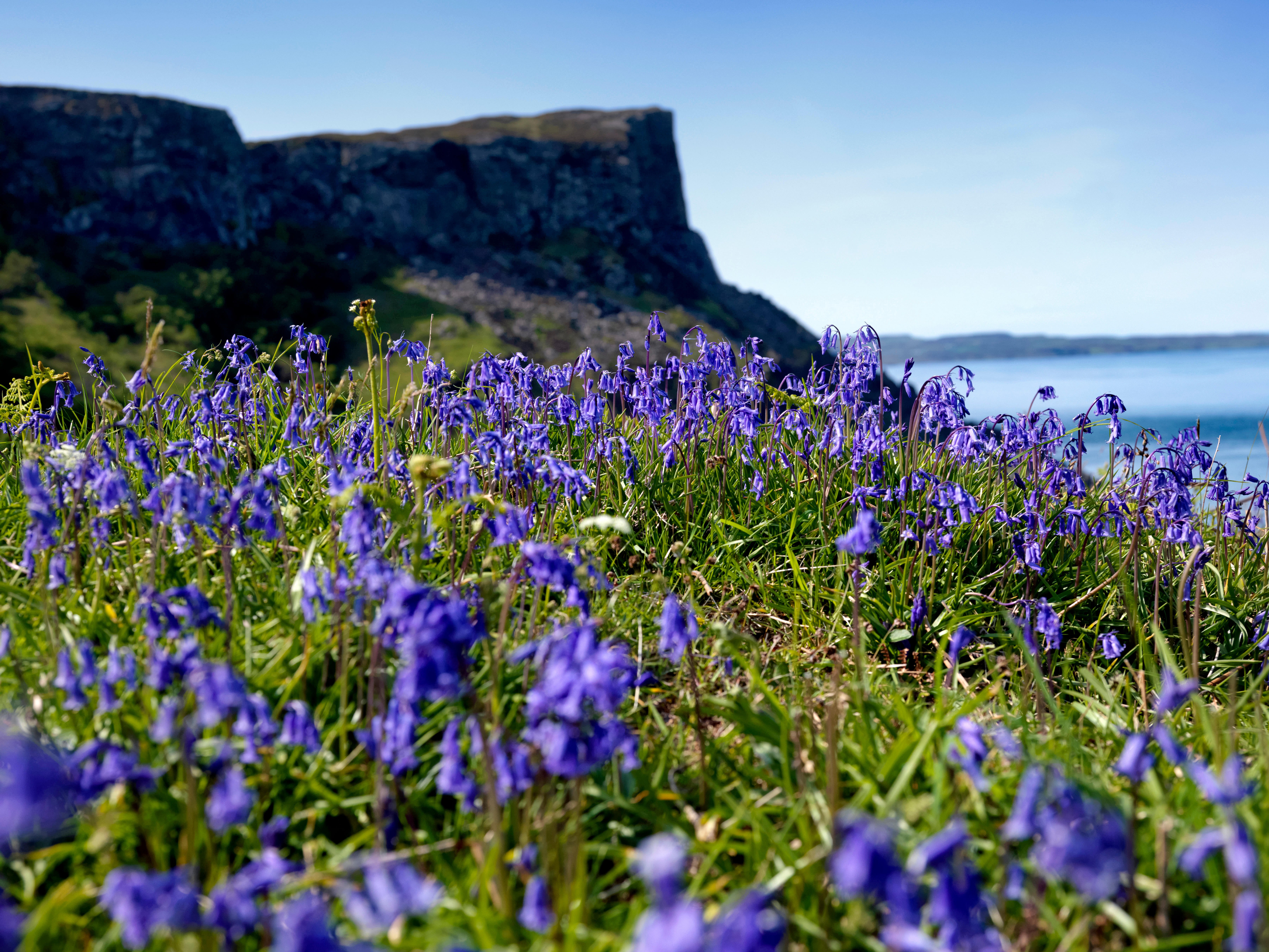Britain’s woodlands come alive in spring with the vibrant hues of bluebells, transforming forest floors into breathtaking carpets of blue.
But where are the best places to witness this spectacular natural display?
Here are a few prime locations to consider for your springtime bluebell walk.
The woodlands at Blickling are carefully managed through the winter months to ensure plenty of sunlight reaches the ground, producing a glorious show of bluebells in late April and early May. Head to the Great Wood and you’ll come across a sea of bluebells whichever way you look, while enjoying views of the spectacular hall and lake. The majestic Jacobean mansion and ancient yew hedges sit at the heart of a magnificent garden and historic park in the beautiful Bure meadows.

There’s plenty to explore in this sweeping parkland of ancient oaks and ponds, offering 422 acres to explore every day of the week 363 days a year (and open on Sunday, April 27 for the charity, the National Garden Scheme). With a choice of circular walks of varying length, (1km to 5km), you can immerse yourself in a haze of bluebells on one of the trails, enjoy wood anemones and blossom, and spot mammals, birds and insects along the way. Ideal for a family day out.
This 5,000-acre area of the Chiltern Hills (Area of Outstanding Natural Beauty) with beech and oak woodlands, commons and chalk downlands, supports a rich variety of wildlife and features amazing carpets of bluebells in spring, rare butterflies in summer and fallow deer that rut in autumn.

A visit to Aughton Woods, an ancient woodland and nature reserve managed by Lancashire Wildlife Trust, will bring peace and solitude to any visitor. Five miles north-east of Lancaster, you’ll find swathes of azure bluebells catching the light through the trees, but also primroses, foxgloves and ferns. Listen out for chiffchaffs and chaffinches, watch out for five species of tit as they flit from tree to tree and woodpeckers as they hammer into the bark of trees.
Visitors to the bluebell woods of Clumber can take a 3.5 mile circular route starting in Hardwick village, through several areas of woodland areas covered with bluebells in spring. The park, which for more than three centuries was the country estate of the Dukes of Newcastle, is carved out of the ancient forest of Sherwood and offers a fantastic expanse of parkland, heath and woods covering more than 3,800 acres.

This gem of a nature reserve, tucked away among the fields and lanes of rural West Dorset, is home to an impressive list of rare and protected species among an intricate mosaic of unimproved wet and dry grassland, scrub, woodland and small copse. In spring the woodlands are alive with birdsong and sprinkled with a carpet of bluebells, wild daffodil, herb-paris and early purple orchid. Along with the mix of habitat types, the abundance of ‘edges’ where woodland, scrub and scattered trees meet open grassland are particularly important for foraging bats, with the site supporting several rare species.
In spring, English Heritage’s Belsay Hall breathes new life into the stunning Grade I-listed gardens, with daffodils flowering freely, while the woodland pathways come alive with carpets of bluebells and primroses. Explore the Quarry Garden as ferns unfurl and rhododendrons burst into vibrant pinks and purples.
Bluebell lovers should enjoy a four-mile Dutton Estate walk to take in the ancient woodland and admire a dazzling display of native bluebells and wood anemones carpeting the woodland floor. The bluebell displays here are among the best in Hampshire, being far-reaching and densely packed, making the colour very intense. Within a 30-minute stroll across picturesque farmland you’ll find yourself in beech woods, which in late April and early May are carpeted in scented native bluebells. The delicate flowers fringe broad woodland paths, so you can enjoy the blooms all around you.
From around mid-April and throughout May you only need to take a short walk through Serpentine Wood to discover an eye-popping carpet of bluebells, which cover the woodland floor. Visitors can also enjoy a bounty of pink and white blossom in the park and gardens through to May.
Spring is among the best time to explore the gardens of this English Heritage property, which is full of surprises and family-friendly features. Masses of bluebells adorn the woodland floors and wildflower lawns, as well as other spring-flowering bulbs. In the past 30 years Brodsworth’s extensive gardens have been restored with brilliant bedding, formal topiary, a fern-filled dell and quirky garden buildings.

Murlough National Nature Reserve is home to one of the most stunning beaches in County Down and there are paths running through the dunes and heathland. The landscape serves as a stunning backdrop for wild flowers in spring, including a dazzling display of bluebells in the woods.
Dinefwr is the only parkland National Nature Reserve in Wales, covering an 850-acre estate, and is bursting with colourful flowering plants – especially in spring when the woodlands across the parkland are carpeted with thousands of bluebells. One of the most spectacular displays can be seen on Rookery Ridge or follow the Cattle Trail to see these delightful flowers throughout May.
A beautiful woodland walk around 50 acres of native bluebells and primroses in a delightful setting bordering the Green Water river with tumbling waterfalls. Great outdoor space for children to run and explore and splash in the burn, under supervision, of course.



